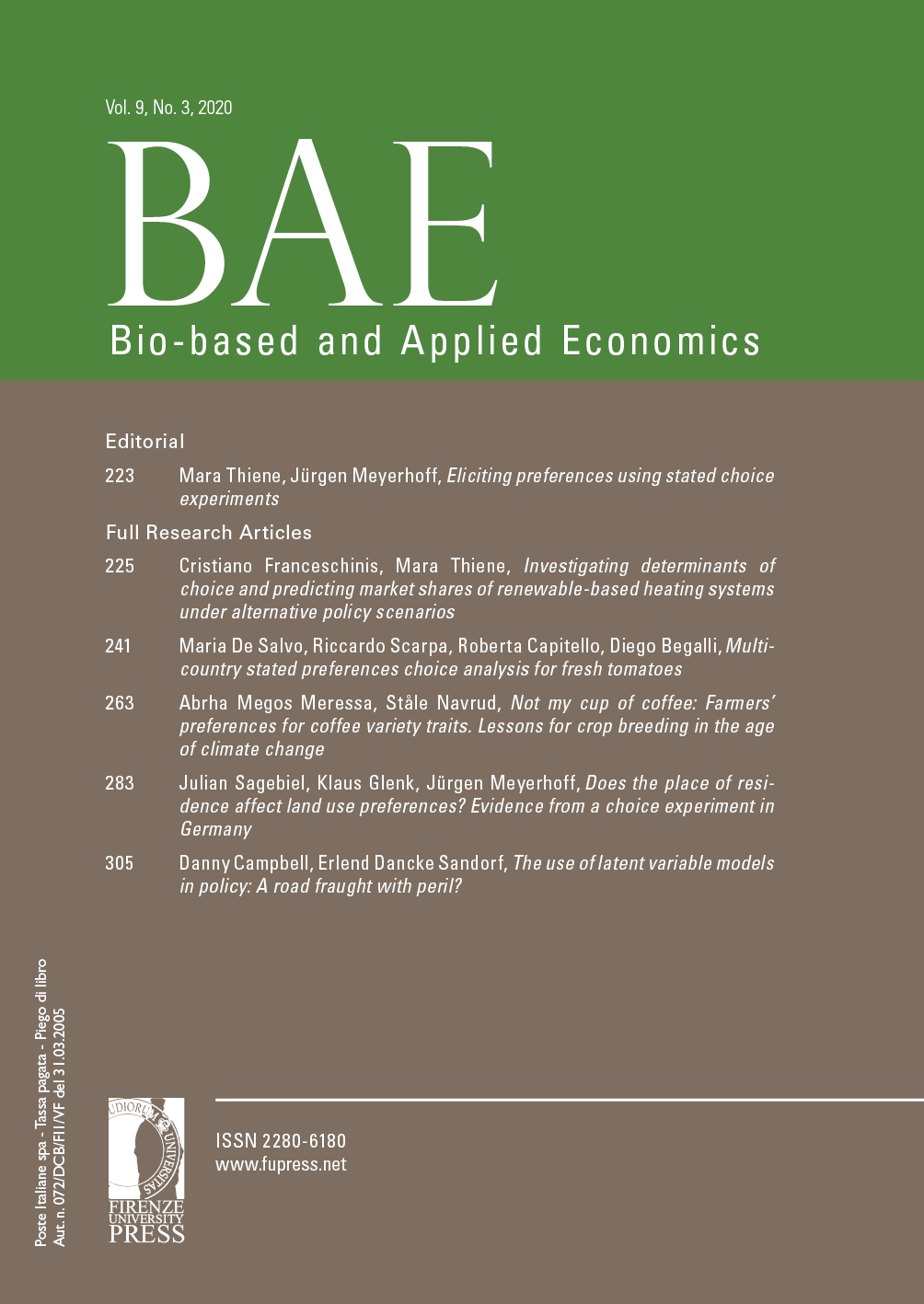Published 2020-12-14
Keywords
- Stated preferences,
- choice modelling,
- integrated choice and latent variables,
- hybrid choice model
How to Cite
Abstract
This paper explores the potential usefulness and possible pitfalls of using integrated choice and latent variable models (hybrid choice models) on stated choice data to inform policy. Using a series of Monte-Carlo simulations, we consider how model selection depends on the strength of relationship between the latent variable and preferences and the strength of relationship between the latent variable and the indicator. Our findings show that integrated choice and latent variable models are difficult to estimate, even when the data generating process is known. Ultimately, we show that their use should be driven by the analyst’s belief about the strength of correlations between preferences, the latent variable and indicator. We discuss the implications of our results for policy.






